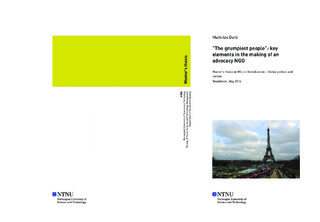| dc.description.abstract | During the past few decades the number of nongovernmental organizations [NGO] have
grown dramatically. This is partly related to processes of globalization contributing to
an expansion of civil spaces within and beyond modern nation states. As a result, NGOs
as “civil society organizations”, have become a much often subject of research. While
NGOs consists of a wide range of organizations, this paper provides a qualitative
analysis of an advocacy NGO. Based on interviews and participant observation, this
study addresses the making and maintenance of an advocacy NGO from a firm-analogy
perspective. I argue that the ever increasing number of NGOs creates a highly
competitive advocacy environment in which most advocacy NGOs need to pay much
attention also to boundary work, which tend to make up a substantial part of their time
and attention. I seek to discuss in what way a competitive social and civil environment
influence the work of an advocacy NGO.
My study pays special attention to organizational identity, in which differentiation and
branding are key components. The study focuses on how the coming into being of one
advocacy NGO involve relational practices in which the making of a fairly clear
distinction between self and others are an integral part of what the NGO does.
Practicing advocacy within the civil spaces of society, I suggest, requires strategic and
often quite tactical boundary work on its own. | nb_NO |

